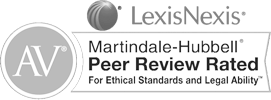
Photo courtesy of jridgeway photography
A few days after 2015’s tax filing deadline last month, the head of the IRS gave testimony to a U.S. House Ways and Means subcommittee on the prevalence of individual and corporate tax fraud and how the IRS is trying to fight it. Here are ten simple tips that consumers and businesses can take to help safeguard their credit.
- Place a Fraud Alert: You can place a fraud alert on your credit report by contacting one of the three credit bureaus. A fraud alert lasts from 90 days to 7 years and notifies businesses to take extra steps to confirm your identity when actions are taken on your credit.
- Place a Credit Report “Security Freeze”: A security freeze goes a step beyond a fraud alert by requiring a PIN or password before a business can check your credit report. Unlike a fraud alert, there’s a fee to put a security freeze on your credit report (unless you’re already a victim of identity theft).
- Order Your Free Credit Reports: Each year, you’re entitled to one free credit report from each of the three credit bureaus. By ordering one of these reports every four months, you can keep an eye on your credit all year long. The only drawback is that you can only get one bureau’s report at a time. So if the identity theft doesn’t show up on all three of your reports, you could miss it for a year.
- Buy Your Credit Reports: If you’ve used up your free annual credit reports, you can always purchase one for around $18-$20. You may be able to get a free credit report if you subscribe to a credit monitoring service. (TIP: Make sure you cancel the credit monitoring service before the trial runs out to avoid getting charged.)
- Monitor Your Accounts Online: It kind of goes without saying, but view your accounts online and check them periodically (if not more) to make sure no unauthorized charges have been made on your accounts. (TIP: Keep your login information safe by not encrypting it when you write it down (adding extra letters or numbers at the beginning or ending or writing them backwards. )
- Consider Credit Monitoring Services: It’s not cheap, as there are less expensive alternatives out there, but credit monitoring is one way of detecting identity theft. You’re paying for the luxury, though. Compare the cost of some credit monitoring services to that of ordering your credit report and you’ll discover that even buying a few credit reports a year can be cheaper. (TIP: If you decide to sign up for credit monitoring, make sure you shop around.)
- Keep Your Social Security Number Safe: It’s the golden ticket for thieves: your social security number can be the death knell to your credit. At all costs, never carry your social security card in your wallet. Don’t write your number down. If you’re ever going to commit something to memory, this is it. (TIP: Memorize it!) Parents often need to have their kids’ and spouse’s social security numbers when changing benefits, filling out taxes, filling out scholarship forms for college and signing up for credit card and bank accounts. Again, if you must keep these numbers with you, encrypt them: don’t label them as social security numbers, add numbers to the front and back or write them backwards.
- Pick Up Your Check Order: If at all possible, pick up new check orders from the bank rather than having them mailed to your home. (This is rarely possible, as nearly all banks outsource check ordering. Sometimes you may be able to have checks mailed to your office.) With your routing and checking account number, a thief can create new checks and use them to make purchases.
- Stop Pre-Approved Credit Card Offers: What used to be called “junk mail” has morphed into just enough information to help a thief gain access to your finances. Those pre-approved credit card offers have your personal information on them. It wouldn’t be the first time a crook has pilfered one of those pre-approved applications from someone’s mailbox and received credit cards in the victim’s name. (TIP: Shred credit card offers before throwing them away or, better yet, stop them altogether by opting out.)
- Pay Your Bills Online: Who uses checks nowadays anyway? Most of the time, you can use your bank’s online bill pay system to have money directly wired to creditors, or the bank cuts the check and withdraws it from your checking account. Thieves have been known to steal payments by check directly out of a victim’s mailbox. Many banks now offer online bill pay. Credit card companies and other lenders offer direct payment options directly on their websites, too. (TIP: If you can’t send your bills from a secure post office box, pay them online.)



